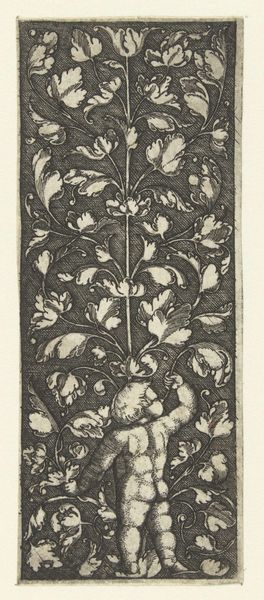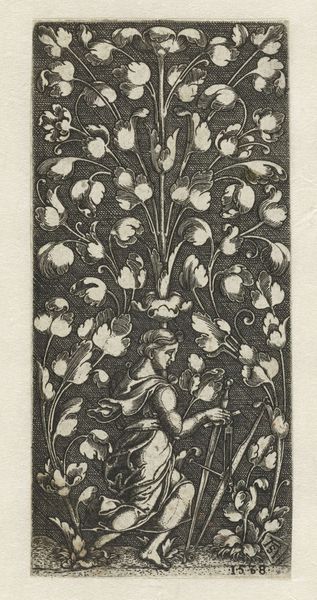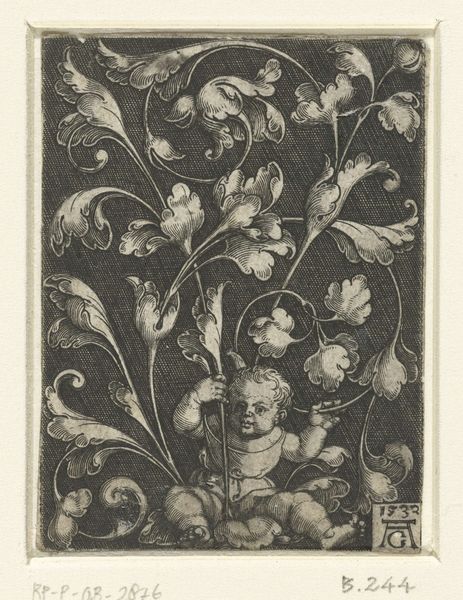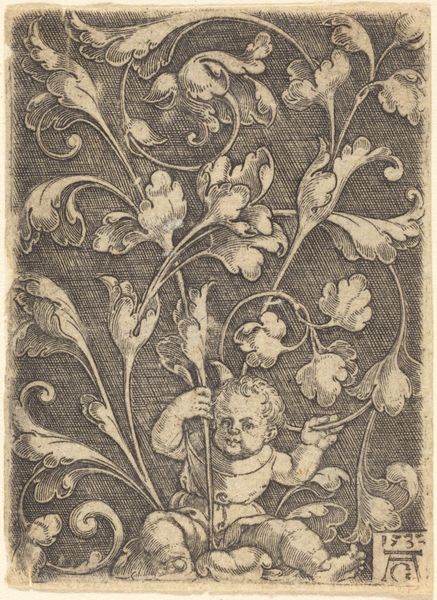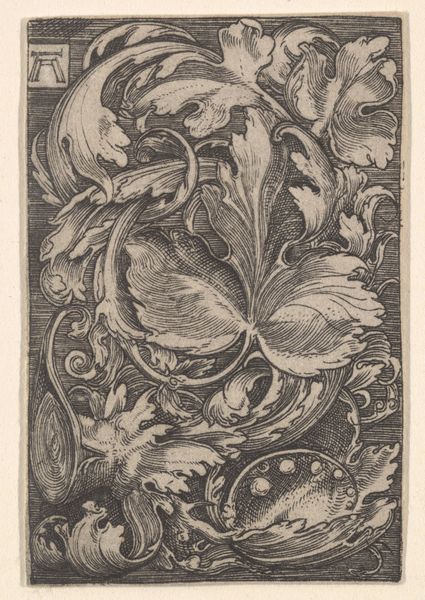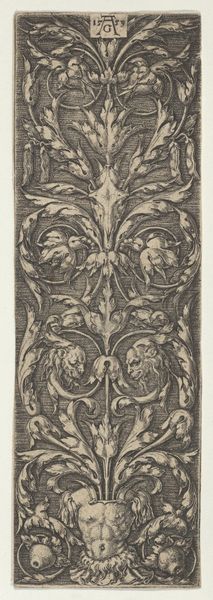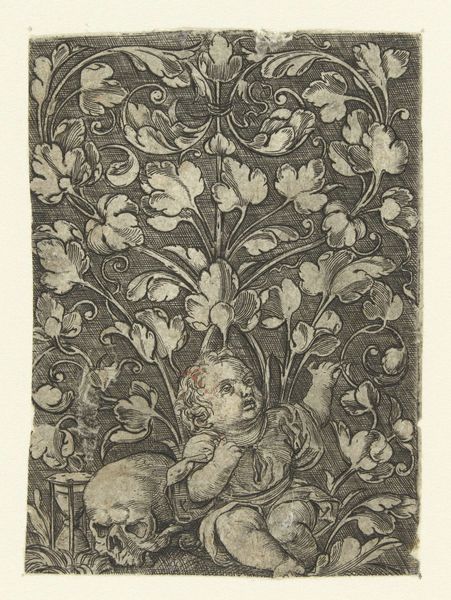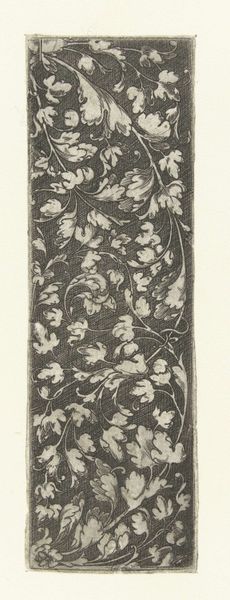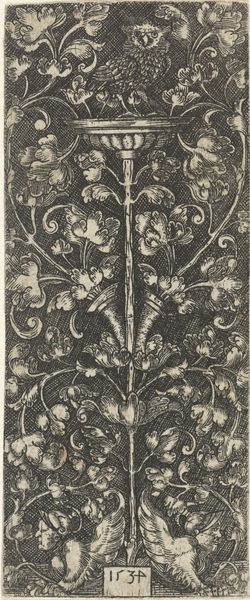
Twee voluten van bladranken, ontspruitend vanuit beide uiteinden van het fries 1500 - 1600
0:00
0:00
print, intaglio, engraving
# print
#
intaglio
#
form
#
ink line art
#
linocut print
#
line
#
northern-renaissance
#
decorative-art
#
engraving
Dimensions: height 34 mm, width 115 mm
Copyright: Rijks Museum: Open Domain
Curator: This striking print, made through intaglio techniques sometime between 1500 and 1600, is known as "Twee voluten van bladranken, ontspruitend vanuit beide uiteinden van het fries" and its author remains anonymous. Editor: My immediate impression is one of tightly packed energy. The dense pattern and interwoven leaves create a real sense of visual activity and contained movement. Curator: Absolutely. Look at the line work; notice the engraver's consistent and confident use of the burin. Observe the relative density of the hatched regions used to create contrast and spatial recession. The whole surface is treated equally with remarkable dedication to the formal visual design. Editor: Speaking of leaves, while they’re beautifully rendered, the overall impression reminds me of dense tapestries or verdant borders in illuminated manuscripts. Do you think this artist wanted to evoke that sense of overflowing nature, of fecundity and growth, themes deeply rooted in early renaissance culture? Curator: The consistent treatment and the self-similar composition deny a privileging of symbolism or content over style. This work foregrounds surface organization through varied visual articulation. Editor: Even the way the leaves unfurl feels significant. Spiraling forms carry a lot of symbolic weight across cultures, representing everything from cosmic expansion to the cyclical nature of life. It’s impossible to ignore how those motifs work on a more subliminal level. Curator: Yet the abstraction moves it away from the literal. There's a tension between the recognizable subject matter—the leaves—and the purely aesthetic arrangement. This generates a pleasing tension across its surface. Editor: Perhaps we're both seeing the tension in this Renaissance print. It resides at the juncture between its surface textures, inviting decorative appeal, and the enduring symbolism embedded within even these abstracted leaves. Curator: I appreciate you noting that duality of interpretation. Editor: As do I; perhaps this short journey into "Twee voluten van bladranken" helps us all appreciate how context shapes our perception of form.
Comments
No comments
Be the first to comment and join the conversation on the ultimate creative platform.


